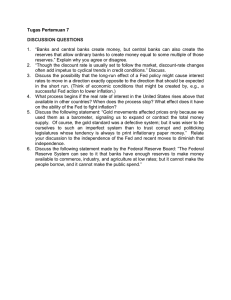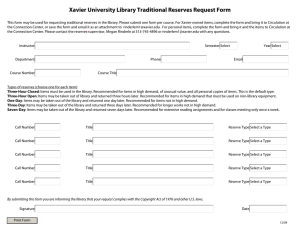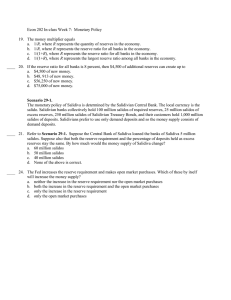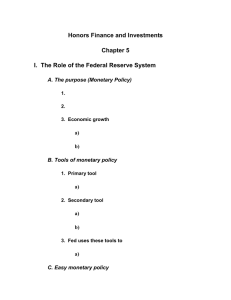Reserve Requirements and the Multiplier Lefkowitz
advertisement
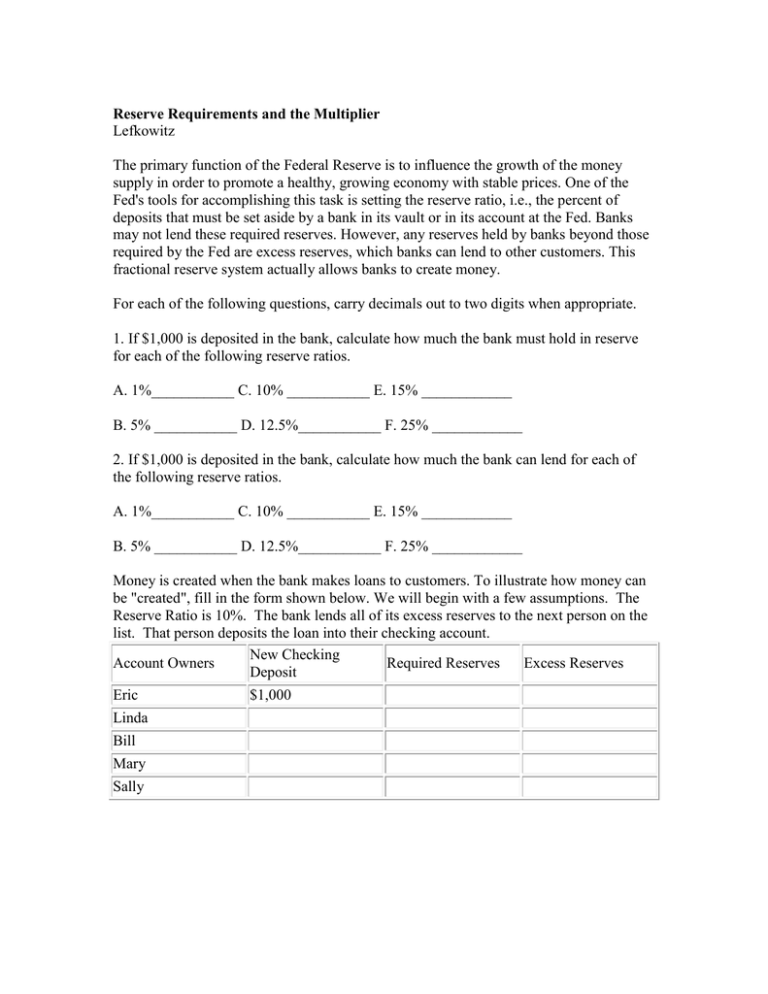
Reserve Requirements and the Multiplier Lefkowitz The primary function of the Federal Reserve is to influence the growth of the money supply in order to promote a healthy, growing economy with stable prices. One of the Fed's tools for accomplishing this task is setting the reserve ratio, i.e., the percent of deposits that must be set aside by a bank in its vault or in its account at the Fed. Banks may not lend these required reserves. However, any reserves held by banks beyond those required by the Fed are excess reserves, which banks can lend to other customers. This fractional reserve system actually allows banks to create money. For each of the following questions, carry decimals out to two digits when appropriate. 1. If $1,000 is deposited in the bank, calculate how much the bank must hold in reserve for each of the following reserve ratios. A. 1%___________ C. 10% ___________ E. 15% ____________ B. 5% ___________ D. 12.5%___________ F. 25% ____________ 2. If $1,000 is deposited in the bank, calculate how much the bank can lend for each of the following reserve ratios. A. 1%___________ C. 10% ___________ E. 15% ____________ B. 5% ___________ D. 12.5%___________ F. 25% ____________ Money is created when the bank makes loans to customers. To illustrate how money can be "created", fill in the form shown below. We will begin with a few assumptions. The Reserve Ratio is 10%. The bank lends all of its excess reserves to the next person on the list. That person deposits the loan into their checking account. New Checking Account Owners Required Reserves Excess Reserves Deposit Eric Linda Bill Mary Sally $1,000




